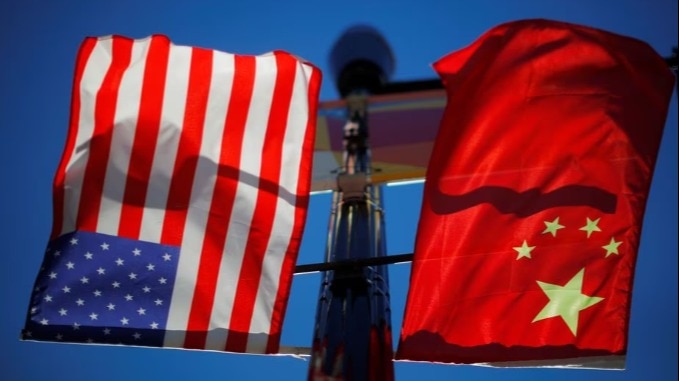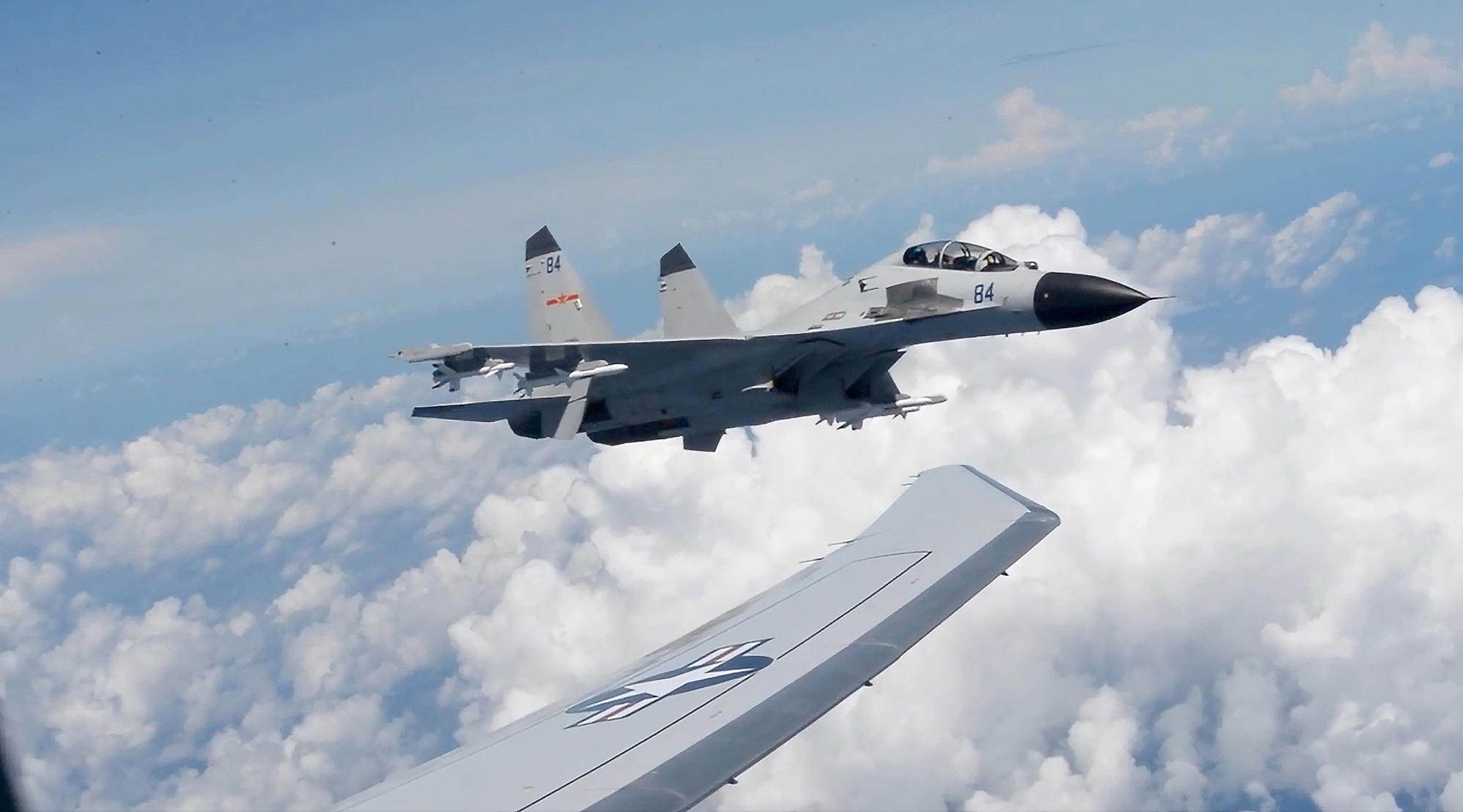China’s rapid space launch advantage, and how the US can try to counter it
China has now passed the United States in its tactically responsive space launch capabilities, according to a new report by the Center for Security and Emerging Technology.

breakingdefense.com
China has now passed the United States in its tactically responsive space launch capabilities, according to a new report by the Center for Security and Emerging Technology.
In recent years, US officials have emphasized a desire for “tactically responsive” space launch — the ability to get a system in orbit as fast as battlefield conditions require, instead of the usual years-long process. In a new analysis, Sam Bresnick of at Georgetown University’s Center for Security and Emerging Technology (CSET), warns that the US’s main competitor already has a leg up in that race.
In a bid to directly rival and compete with SpaceX’s Starlink network, Chinese military
officials are advocating for the speedy deployment of a low-Earth orbit constellation of almost 13,000 satellites. While the scale of this particular endeavor may seem surprising, it is in keeping with the accelerated advancement of Beijing’s space industry. The last five years have seen a marked increase in China’s satellite launches, and the country now boasts the second most extensive space architecture after the United States.
Satellites power modern communications networks and facilitate weather forecasting, and the People’s Liberation Army (PLA), like other modern fighting forces, is
integrating satellite-enabled capabilities into its military doctrine. The PLA has developed satellites for position, navigation, timing (PNT) services, intelligence, surveillance, and reconnaissance (ISR) capabilities, communications, and even early missile warning systems. As China’s dependence on space has increased for both economic and security applications, Beijing has poured resources into improving the durability of its growing space architecture, both by designing systems that are resilient to attack and by deterring attacks against its satellites.
Strikingly, China launched its first satellite in 1970, but almost half of its total space launches took place from 2017 to 2022, which included the majority of its satellites successfully placed into orbit. (Last week, a top Space Force intelligence official said China
has almost doubled its total satellites in the last “three to four years.”) China’s impressive space advances during the past few years are hard to ignore, and with no signs of slowing, they are worth special attention.
Our
new report from the Center for Security and Emerging Technology analyzes how China has made significant strides in several measures of
space resilience:
satellite proliferation, or the total number of space-based systems it operates,
satellite orbital diversification, or the locations in which these systems are placed, and
access to space, or the ability to launch satellites.
To be sure, it is difficult to fully measure China’s space resilience due to the limited open-source data on specific satellite capabilities. It is also challenging to define the concept, as the United States and China are likely enacting different strategies to improve the resilience of their respective space architectures. That said, our survey of China’s space launches and its satellites’ orbital positioning reveals that the country’s space architecture is becoming increasingly resilient. China is positioning its satellites in an array of diverse orbital regions, making it more complex for any potential adversary to disrupt its space systems, and increasing the likelihood that China could continue to use space-enabled technologies despite attacks on its space architecture.
Our most important finding, however, is that in one measure of space resilience, tactically responsive space launch (TRSL), China appears to have surpassed the United States.
RELATED: Space Force eyes 2025-2026 timeframe for tactically responsive space capabilities
TRSL is the capability to speedily replace satellites damaged or destroyed in conflict or by accident. Whereas most space launches take several months or longer to facilitate due to the complexity of the preparation process, a responsive launch should take place no more than a few days after direction and be able to take place during a conflict. Given both the US and Chinese militaries’ reliance on satellite systems for conducting modern warfare, the country that can quickly reconstitute on-orbit capabilities would have an advantage in high-end conflict scenarios.
Despite the
US military’s acknowledgment of the need for more reliable TRSL capabilities, the US space industry, including members of the private and public sectors, have traditionally focused on payload capacity, reliability, and efficiency, or launching as many satellites as possible at a time. Such a strategy has led to the construction of large, liquid-fuel rockets that have allowed the United States to develop the most extensive space architecture. Such an approach, however, has its downsides. Launching these rockets takes a significant amount of time, as positioning and safely fueling them are complex processes requiring extensive ground support equipment. In short, these rockets are not ideal for conducting responsive launches.
China has also developed a suite of large, liquid-fuel rockets capable of carrying many satellites, but it has concurrently built a series of mobile, solid-fuel rockets that do not depend on complex launch infrastructure. These rockets, most of which were designed by Chinese space conglomerates CASC, CASIC and their subsidiaries, require little ground support equipment, and most of them can be launched from transporter-erector-launchers (TELs), specialized vehicles that support mobile launches. These mobile rockets, which are generally smaller than their liquid-fuel counterparts, cannot carry as many satellites as larger ones. They can, however, be speedily transported to remote locations and launched, making them ideal options for quickly replacing space systems damaged or destroyed in a conflict.
The United States has not prioritized mobility or speed, launching only 11 orbital-class, solid-fuel rockets from 2013 to 2022, compared to China’s 51. As of now, the United States operates only two solid-fuel launch vehicles, the Pegasus and Minotaur. Whereas the latter depends on fixed launch platforms, the former is deployed from an aircraft, providing improved mobility. In June 2021, the US Space Force launched a Pegasus XL from an aircraft only 21 days after direction, an important step toward achieving a reliable TRSL capability. This year, the Space Force is planning to launch a liquid-fuel rocket within twenty-four hours of direction, a difficult feat given the complexity of fueling launch vehicles and preparing their engines for ignition.
A serious conflict is in no country’s interest, but preparing for such a risk requires that the United States develop a dependable TRSL capability. While China appears to rely on mobile, solid-fuel rockets for TRSL, Washington need not mimic Beijing. The United States should, however, develop a strategy to produce and store inventories of satellites that could be launched on short notice. It could also partner with the commercial space industry to develop launch vehicles that meet TRSL objectives. Though most liquid-fuel rockets are not designed for fast launches, both the government and commercial space companies likely share an interest in developing quicker-launching capabilities. Finally, Washington could invest in bolstering its solid-fuel rocket program to satisfy its TRSL needs.
Though the United States maintains the world’s most advanced space capabilities and most extensive space architecture, it should not assume that it will be able to quickly reconstitute the satellite systems on which it would rely during a conflict. Despite the low likelihood of requiring a TRSL capability, the situations in which Washington would need one are of the highest consequence. Therefore, investments in rapid launch capacity are sorely needed.
Sam Bresnick is a research fellow at Georgetown University’s Center for Security and Emerging Technology (CSET).




www.google.com





www.airandspaceforces.com
